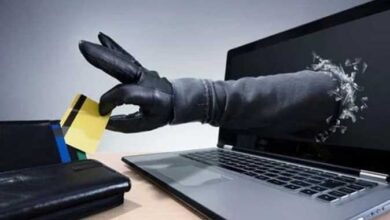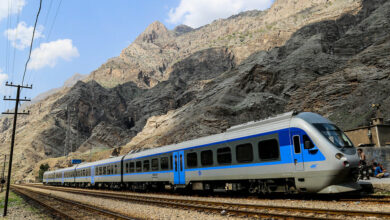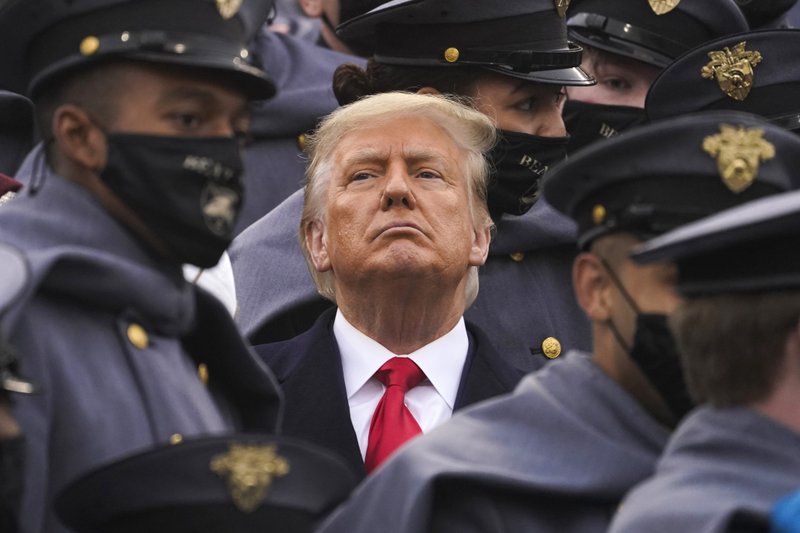
DUBAI, United Arab Emirates (AP) — Multiple channels of Iran’s state television broadcast images on Thursday showing the leaders of an exiled dissident group and a graphic calling for the death of the country’s supreme leader, an incident that authorities later described as a hack.
For several seconds, graphics flashed on screen, interrupting the broadcast to depict the leaders of the opposition group Mujahedeen-e-Khalq. The name of a social media account, which claimed to be a group of hackers who broadcast the message honoring the dissidents, also appeared. Two state radio stations were also interrupted.
Shahin Gobadi, a Paris-based MEK spokesperson, later told The Associated Press: “We, like you, were just informed about the issue.”
“It appears that it was done by supporters of the MEK and resistance units within the regime’s radio and television stations,” he said, without directly claiming responsibility. He offered no evidence to support his assertion.
The hack represented a major breach of Iranian state television, long believed to controlled and operated by members of the Islamic Republic’s intelligence branches, particularly its hard-line Revolutionary Guard. Such an incident hasn’t happened for years.
A clip of the incident seen by the AP showed the faces of MEK leaders Massoud Rajavi and his wife, Maryam Rajavi, suddenly superimposed on the channel’s regular 3 p.m. news programming. A man’s voice chants, “Salute to Rajavi, death to (supreme leader) Khamenei.”
Then, a speech from Rajavi briefly plays over the images. He can be heard saying, “Today, we still honor the time that we declared death to the reactionary. We stood by it.”
Massoud Rajavi hasn’t been seen publicly in nearly two decades and is presumed to have died. Maryam Rajavi now runs the MEK.
Iran’s state TV said authorities would investigate the intrusion. It apparently marked the latest in a series of embarrassing cyberattacks against the Islamic Republic as world powers struggle to revive Tehran’s tattered nuclear deal with world powers. Other attacks, which Iran has blamed on Israel, have been directed at its nuclear program.
In October, an assault on Iran’s fuel distribution system paralyzed gas stations nationwide, leading to long lines of angry motorists unable to get subsidized fuel for days. A cyberattack on Iran’s railway system caused chaos and train delays. Another hack leaked footage of abuses at its notorious Evin prison.
Iran, long sanctioned by the West, faces difficulties in getting up-to-date hardware and software, often relying on Chinese-manufactured electronics or older systems. Some control room systems in Iran run Windows 7, for which Microsoft no longer provides patches. That would make it easier for a potential hacker to target. Pirated versions of Windows and other software are common across Iran.
Reza Alidadi, a top state TV official, later told the broadcaster that the attack possibly involved help from foreigners.
“It seems the incident is not simple and it is a complicated job that (only) owners of the technology are able to use,” he said, without elaborating.
Interruptions in Iranian state television broadcasts have happened before. In 1986, those watching state TV in Iran were surprised to see the country’s exiled Crown Prince Reza Pahlavi appear to give a speech for about 11 minutes. He expressed his determination to fight Ayatollah Ruhollah Khomeini, the founder of the Islamic Republic, and asked Iranians for their support.
At the time, people speculated that Pahlavi potentially received assistance from a foreign intelligence agency that had smuggled a transmitter into the country to hijack the signal. Amid the revelations of the Iran-Contra affair, reporting showed the CIA backed that transmission, as well as the work of an exile radio station in Cairo broadcasting against the Islamic Republic.
The CIA did not immediately respond to a request for comment about Thursday’s incident.
The MEK began as a Marxist group opposing the rule of Shah Mohammad Reza Pahlavi. It claimed and was suspected in a series of attacks against U.S. officials in Iran in the 1970s, something the group now denies.
It supported the 1979 Islamic Revolution, but soon had a falling out with Khomeini and turned against the clerical regime. It carried out a series of assassinations and bombings targeting the young Islamic Republic.
The MEK later fled into Iraq and backed dictator Saddam Hussein during his bloody eight-year war against Iran in the 1980s. That saw many oppose the group in Iran. Although largely based in Albania, to this day the group claims to operate a network inside Iran.
___
Follow Jon Gambrell on Twitter at www.twitter.com/jongambrellAP.




